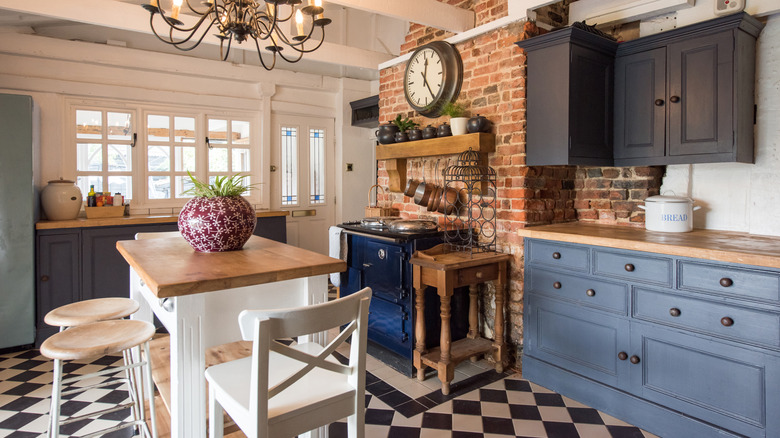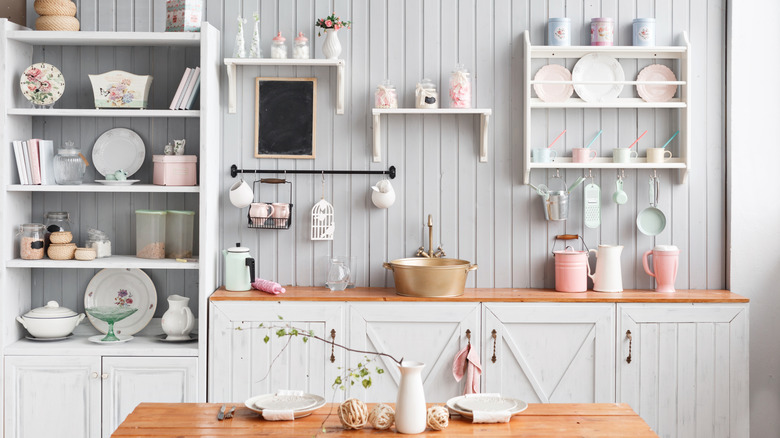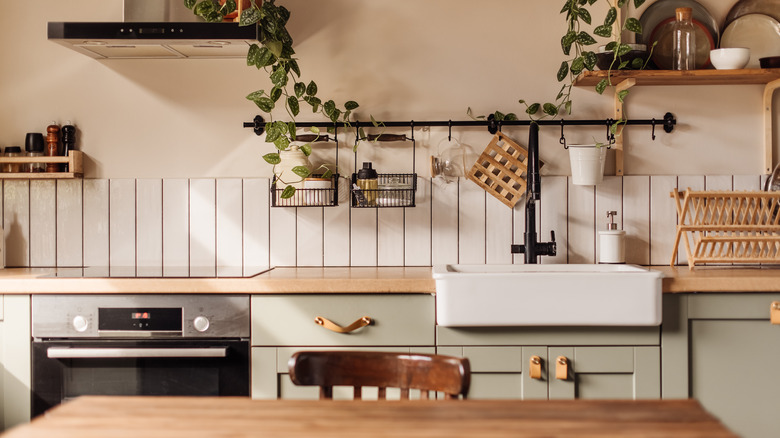The Old-Fashioned Kitchen Backsplash Design That's Making A Big Comeback
Tile has been the go-to for kitchen backsplashes for decades because tile is customizable and easy to clean, fulfilling the role of a backsplash as a forgiving canvas for your pasta sauce and grease. As of late, not everyone has been looking down the tile aisle when searching for a way to upgrade their kitchen walls. Some people are opting for a classic style that once would have been considered outdated — wood paneling.
Bringing wood into your home adds a natural warmth that appeals to the senses, making it a good choice for a kitchen, which is often the centerpiece of a home. Especially in older homes, which might not fit well with a more modern, minimalist kitchen, wood paneling can give a timeless style to a kitchen interior. If a natural wood look isn't your style, you can still take advantage of wooden paneling, since you can customize the material by painting the woodwork.
Incorporating wood paneling as a backsplash
Regardless of the style of your home, there is a kind of wood paneling to match your aesthetic. If you're looking to capture the old-fashioned vibe of traditional paneled kitchens, beadboard and tongue-and-groove are classic, affordable options. Both styles can be applied as wainscoting, meaning they won't cover the entire wall and are capped with molding. By utilizing a wainscoting border, you can save money by only covering part of a wall while still getting all the aesthetic benefits of wood paneling.
Like wood flooring, wood paneling on a backsplash can be arranged in a variety of ways. Shiplap paneling is traditionally applied horizontally to a wall, widening tight spaces while providing rustic charm. For a more elegant look, you can opt for raised wood panel walls, which are typically painted and complement older, colonial homes. If you're really into a retro kitchen look, you can't go wrong with the familiar vertical wall paneling that dominated 1970s homes. While these panels were traditionally left with a dark stain finish, there are many beautiful ways you can modernize dated wood paneling on a budget for a fresh look.
The benefits (and drawbacks) of wood paneled backsplashes
While wood has an unbeatable aesthetic appeal, you might be cautious about putting it in your kitchen, especially as a backsplash. In areas subjected to high heats or even fire, such as behind a gas range, opt for tile, glass, or stainless steel, but in all other areas of your kitchen, wood paneling works well. The paneling is typically treated to survive the wear associated with a kitchen, and if finished with a solid topcoat, they are easy to wipe down.
Installation is key in ensuring your paneling withstands everything from grease splatters to sticky fingers. During installation, any seams in the panels should be filled with caulk, which ensures both a seamless end product and makes the surface durable, protecting your walls. You may already have caulk, but it's important to choose the perfect caulk for the job, so consider whether what you already have on hand meets the needs of a kitchen install and if it is paintable.


